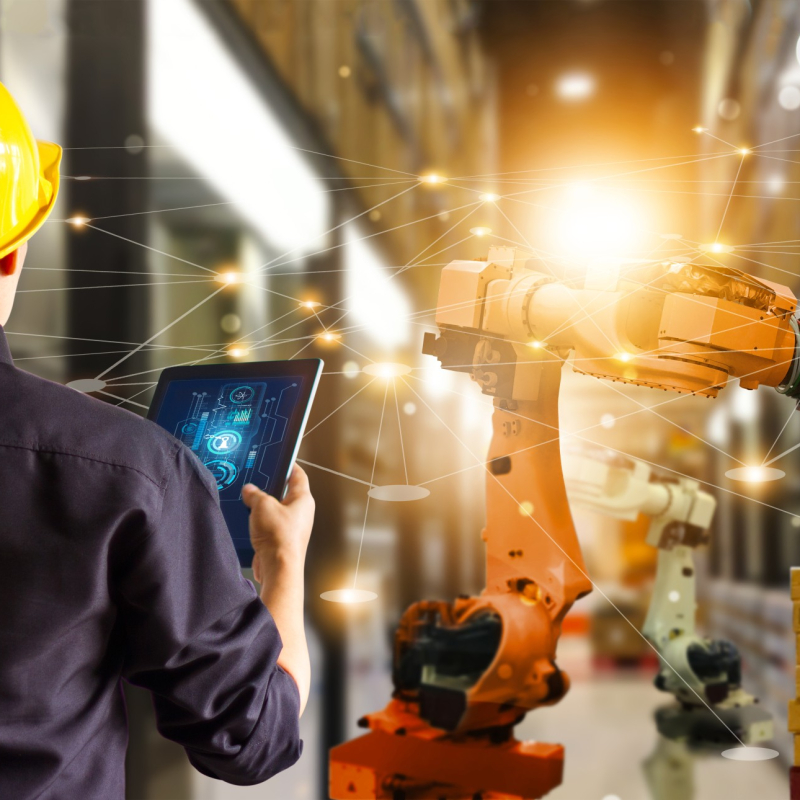Managing People and Autonomous Mobile Robots Together
The uptake of autonomous mobile robots (AMRs) has been a cause for concern for many in recent years. Unbeknown to most however, AMRs and the workforce can work together in perfect harmony to deliver a series of advantages to organisations serving all industry sectors.
With the correct protocols in place, the automation of the workforce can be a positive step in the right direction for all. Companies, workers and the customers they provide products or services to can benefit by bringing autonomous mobile robots and the workforce together as one.
How are AMRs Affecting the Workforce?
How do AMRs complement the workforce and improve workflows?
When structured correctly, facilitating the simultaneous use of autonomous mobile robots and the workforce can unlock a long list of advantages.
AMRs are well known for increasing productivity, flexibility and scalability for organisations of all sizes and niches, and do so while freeing up the space, resources and talent to benefit operations as a whole. Another noticeable benefit of autonomous mobile robots and the workforce working together is an improvement in safety records within organisations who deploy them.
The automation of the workforce enables hazardous or even tedious jobs to be undertaken with greater care to reduce a plethora of injuries. But this isn’t the only way autonomous mobile robots and the workforce can work together to promote higher standards of safety on the factory floor. Whilst the presence of heavy-duty machinery could mean exposing your workers to more hazards without the right management, the deployment of mobile robots is different.
Unlike forklifts and automated guided vehicles (AGVs), AMRs require zero infrastructure to fulfil their roles safely. With this, they are able to work autonomously and efficiently, safely manoeuvring throughout the facility without causing risky obstructions. The use of AMRs also minimises the transmission of infectious diseases, which is particularly valuable in the wake of the Covid-19 pandemic and its ongoing effects on business operations. AMRs reduce the need for person-to-person contact at work to promote social distancing within the industrial environment.
What are the workforce’s concerns about AMRs?
According to recent findings, the adoption of automation and machines is expected to see a decline of 18% in the availability of activities that require physical and manual skills within the next decade. The same model predicts a decline of 28% in activities requiring basic cognitive skills by 2030, meaning the job market is about to get much smaller for human workers due to the current trends of automation of the workforce.
Whilst the vast majority of people will relish the challenge of adapting their skillsets and finding a new outcome for their talents, the automation of the workforce represents a series of concerns for the remainder.
Many workers will require different skills to succeed in the workplace due to the ongoing integration of AMRs and may even need to change occupations altogether to thrive. Workplaces and workflows will change in response, but they’ll also evolve to make room for autonomous mobile robots and the workforce to work together.
How have workplace roles changed due to the introduction of AMRs?
Many workplaces are already seeing a change in the roles at the centre of their operations due to the introduction of AMRs and the automation of the workforce. There’s now a demand for more technologically advanced skills and experience, expertise that will support the use of AMRs for the long term within the organisations that rely on them either partly or fully. This demand is growing rapidly and is expected to continue as an upward trend long into the future.
On the other hand, manual roles providing repetitive duties and occupations within data processing or collection will see a sharp decline.
There are of course some roles AMRs will never be able to fulfil, even as the demand for physical and manual skills continues to decline. Difficult to automate jobs that require candidates with social, emotional and higher cognitive skills will become increasingly available as a result.
Development of AMRs and their future
The prospect of a ‘connected worker’ is opening up various opportunities within the warehousing and logistics sectors. By optimising tasks and better coordinating autonomous mobile robots and the workforce, organisations can transform the warehouse management system, improve productivity using business intelligence, meet demands both now and in the future, and successfully scale their operations.
The use of rugged mobile devices or wearables is providing a much-needed bridge between autonomous mobile robots and the workforce. By connecting the two, workflow can be optimised and resources pooled for optimum productivity and throughput.
Combining human and robot resources could ultimately empower organisations and the workers within allowing AMRs to carry the load and human workers to use their talents elsewhere to boost efficiency and success.
Guidance Automation and AMRs
The automation of the workforce is easier and more affordable than ever. As a leading provider of flexible, robust, innovative and fully customisable autonomous mobile robot solutions, we can assist you in adopting automated systems within your workplace to maximise the potential of your workers.
Autonomous mobile robots and the workforce can work side by side to change the supply chain for the better. Cut costs, boost productivity, minimise errors and tap into your talent by working with us to unlock the power of automation in your organisation.
Here at Guidance Automation, we actively support SMEs looking to introduce AMRs to either manage current staffing shortfalls or allow existing workers to focus on added value activities that will benefit the business.
Conclusions about AMRs and the Workforce
Whilst many believe that the future is about the complete automation of the workforce, using collaborative solutions that increase the productivity of all workers (whether human or robot) can unlock many more benefits.
Human workers will be spared the dangerous or tedious tasks that put them at risk of physical injury or mental exertion. AMRs are already on their way to providing the intuitive user interfaces, integrated vision guidance, enhanced sensors, and voice and gesture responsiveness that will transform work, the workplace and worker quality of life for the better.
Rather than look at the automation of the workforce as the decline of certain occupations, the developing partnership between autonomous mobile robots and the workforce should be seen as an opportunity for new job roles.
Want to discover how you can use automation to support your workforce and wider operations? Book your free AMR trial or contact us direct to discuss your specific requirements.




